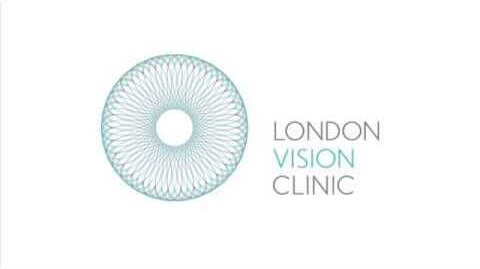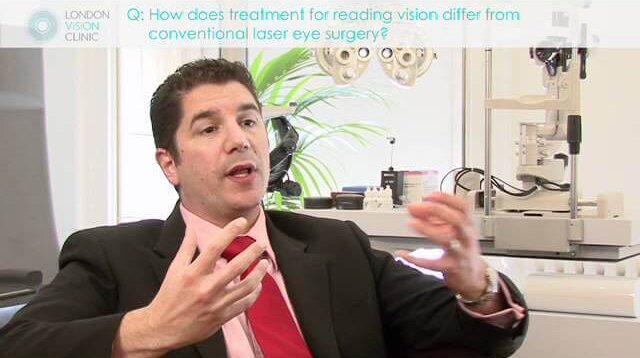How Does Laser Eye Surgery for Reading Vision Differ from Conventional Treatment?

For decades, Laser Eye Surgery has been successfully utilised to change the lives of millions of people by helping to rid them of glasses and contact lenses. But while the procedure has long been able to correct short-sightedness, followed by long-sightedness and astigmatism, many people are still aware of its effectiveness as a solution to presbyopia – or “ageing eyes”.
What is Presbyopia?
Presbyopia is a natural part of the eye’s ageing process that causes the focusing power of the eye to weaken. Over time, it becomes increasingly difficult to focus on close objects such as the pages of a book. As a result, many of us begin to rely on reading glasses from around our mid-40s.
But just because this process is natural, it doesn’t mean we just have to accept it!
The development of PRESBYOND® Laser Blended Vision by our very own Professor Dan Reinstein in 2004 helped to drastically change our expectations of Laser Eye Surgery. Over the last 20 years, this revolutionary treatment has helped to rid tens of thousands of patients of reading glasses, giving them back their visual freedom.

So, how exactly does PRESBYOND® Laser Blended Vision differ from conventional Laser Eye Surgery?
PRESBYOND® Laser Blended Vision: A Unique Approach to Presbyopia
While PRESBYOND® Laser Blended Vision remains one of the most significant developments in the world of refractive surgery, its approach does not differ, in a mechanical sense, from conventional Laser Eye Surgery. This means that the techniques used to change the shape of the cornea are the same as those used to correct any other refractive errors. However, there is a key difference.
Unlike typical Laser Eye Surgery procedures that are used to correct myopia (short-sightedness), hyperopia (long-sightedness), or astigmatism, PRESBYOND® Laser Blended Vision involves correcting each eye differently.
As our expert Laser Eye Surgeon, Mr Glenn Carp, explains in the video below, this works by correcting the dominant eye mainly for distance vision while the non-dominant eye is corrected mainly for near vision.

This technique enables two versions of the same image to be sent to the brain which, in most cases, can combine them to create a clear image across all distances. We can achieve the PRESBYOND® Laser Blended Vision effect with any Laser Eye Surgery technique (PRK/LASEK, LASIK, and ReLEx SMILE).
PRESBYOND® Laser Blended Vision is a much more tolerable option than other alternatives, such as monovision. For example, around 97% of patients will tolerate laser-blended vision compared with just 60% who can tolerate monovision.
Furthermore, Laser Eye Surgery offers a much less invasive solution to presbyopia. While monovision involves implanting artificial lenses in the eye, Laser Blended Vision is a quick and painless laser procedure that is over in just a matter of minutes.
Recovering from PRESBYOND® Laser Blended Vision
Your recovery from PRESBYOND® Laser Blended Vision will vary depending on several factors – most significantly, the type of procedure that was used. The majority of patients will undergo LASIK Laser Eye Surgery, in which case, your eyes will likely heal within a matter of days. However, as is the case for patients recovering from monovision surgery, it can take your brain between a few weeks and a few months to fully adapt to the transition.
PRESBYOND® Laser Blended Vision is an incredible and unique approach to the correction of reading vision. If you would like to learn more about this procedure or our other treatments, get in touch with one of our friendly clinic coordinators or Book a Consultation today.


